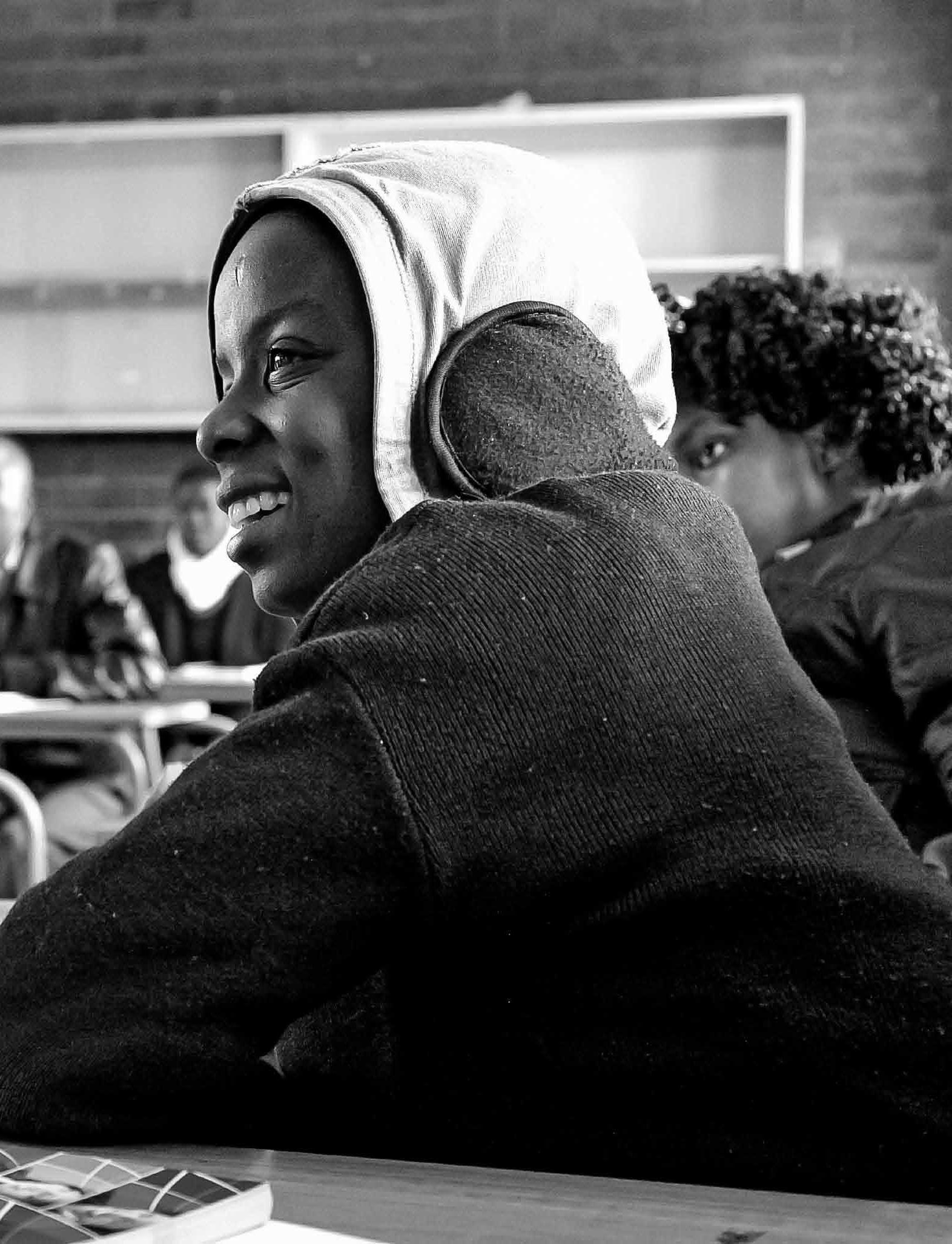
1 minute read
section 4 / cause and eFFect
section 4
cause and eFFect
Disruptions to education are gendered and so are the consequences.

The previous sections have explored how gender-related barriers and setbacks shape the ways in which learners experience school.
Over the course of the Covid-19 pandemic, rates of absenteeism and estimated dropout figures increased dramatically. In 2020, the matric pass rate was already 5% lower than it had been in 2019.126 The ripple effect of pandemic-related disruptions will likely continue to be felt over the next decade, both in educational outcomes and dropout figures.
ithin the first five months of w the Covid-19 lockdown, five million children lost access to school meals,127 and by march 2021, even fewer learners were accessing food at school.128 when learners are hungry, they find it difficult to learn, and are more likely to fall behind in their classwork. To make matters worse, between march 2020 and June 2021, most primary school learners lost 70-100% (i.e. a full year) of learning relative to the 2019 cohort.129 The longterm effects of disruptions to schooling for today’s primary school children — including learning losses and repetition rates — may lead to dropout when they reach
Grades 10, 11 and 12.130
in July 2021, researchers, drawing on niDS-cram household survey data, estimated that dropout was the highest it had been in 20 years. niDS-cram reported that since the start of the pandemic, an additional 500 000 learners had not returned to school when compared to pre-pandemic figures.131 However, subsequent analysis of school administrative data132 paints a more conservative picture, suggesting that higher than normal rates of non-attendance during the pandemic have largely not translated into permanent dropout. But even if rates of dropout are lower than what niDS-cram suggests, there remain concerns that the ripple effect of disrupted learning is still to be felt. To get a precise picture of dropout in the country requires accurate and complete datasets that track learners’ progression over the course of their schooling journey.
The starting point is having a standardised definition of dropout. This call is echoed by a coalition of activists, researchers and education experts in an open letter to the minister of basic education, angie motshekga, published in august 2021.133








